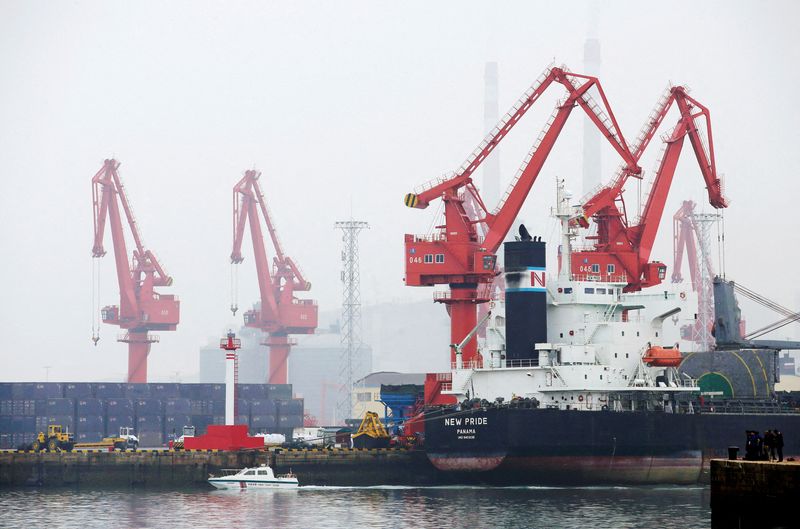
© Reuters. FILE PHOTO: A crude oil tanker is seen at Qingdao Port, Shandong province, China, April 21, 2019. REUTERS/Jason Lee/File Photo
BEIJING (Reuters) – Saudi Arabia regained the spot as China’s top crude supplier in the first two months of 2022, having been leapfrogged by Russia in December, while Russian shipments dropped 9% as a cut in import quotas led independent refiners to scale back purchases.
Arrivals of Saudi crude totalled 14.61 million tonnes in January-February, equivalent to 1.81 million barrels per day (bpd), down from 1.86 million bpd a year earlier, data from the General Administration of Customs showed on Sunday.
Imports from Russia totalled 12.67 million tonnes in the two months, or 1.57 million bpd. That compares to 1.72 million bpd in the corresponding 2021 period.
Demand for Russia’s flagship ESPO crude from Chinese independent refineries, known as teapots, was hit by Beijing’s crackdown on tax evasion and illegal trading of import quotas.
The government also cut its first batch of 2022 crude import allowances to teapots, aiming to eliminate inefficient refining capacity.
Imports from Russia could tumble in March as buyers worldwide shun its cargoes in the wake of the intensifying Ukraine crisis. But Reuters reported that Russian producer Surgutneftegaz was working with China to bypass Western sanctions and keep up oil sales.
Sunday’s customs data showed that 259,937 tonnes of Iranian crude oil arrived in China in January, around the same level as in December 2021, the first imports recorded by official Chinese data since December 2020.
The shipments came as Tehran and Western nations hold talks on reviving a 2015 nuclear deal, pointing to a possible lifting of U.S. sanctions on Iranian oil exports.
No Iranian cargo were recorded by Chinese customs in February.
China’s official data also showed no imports from Venezuela, which is under U.S. sanctions as well, in January and February.
Here is the detailed breakdown of trade, with volumes in metric tonnes:
Source: Investing.com



























